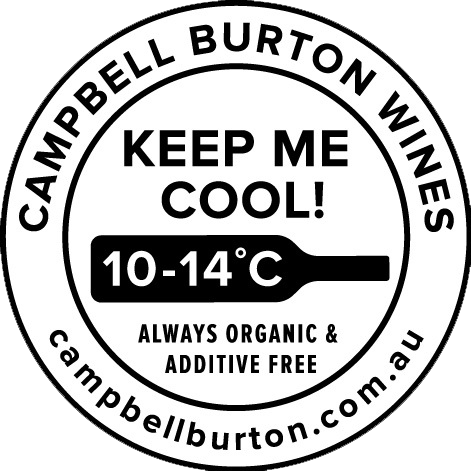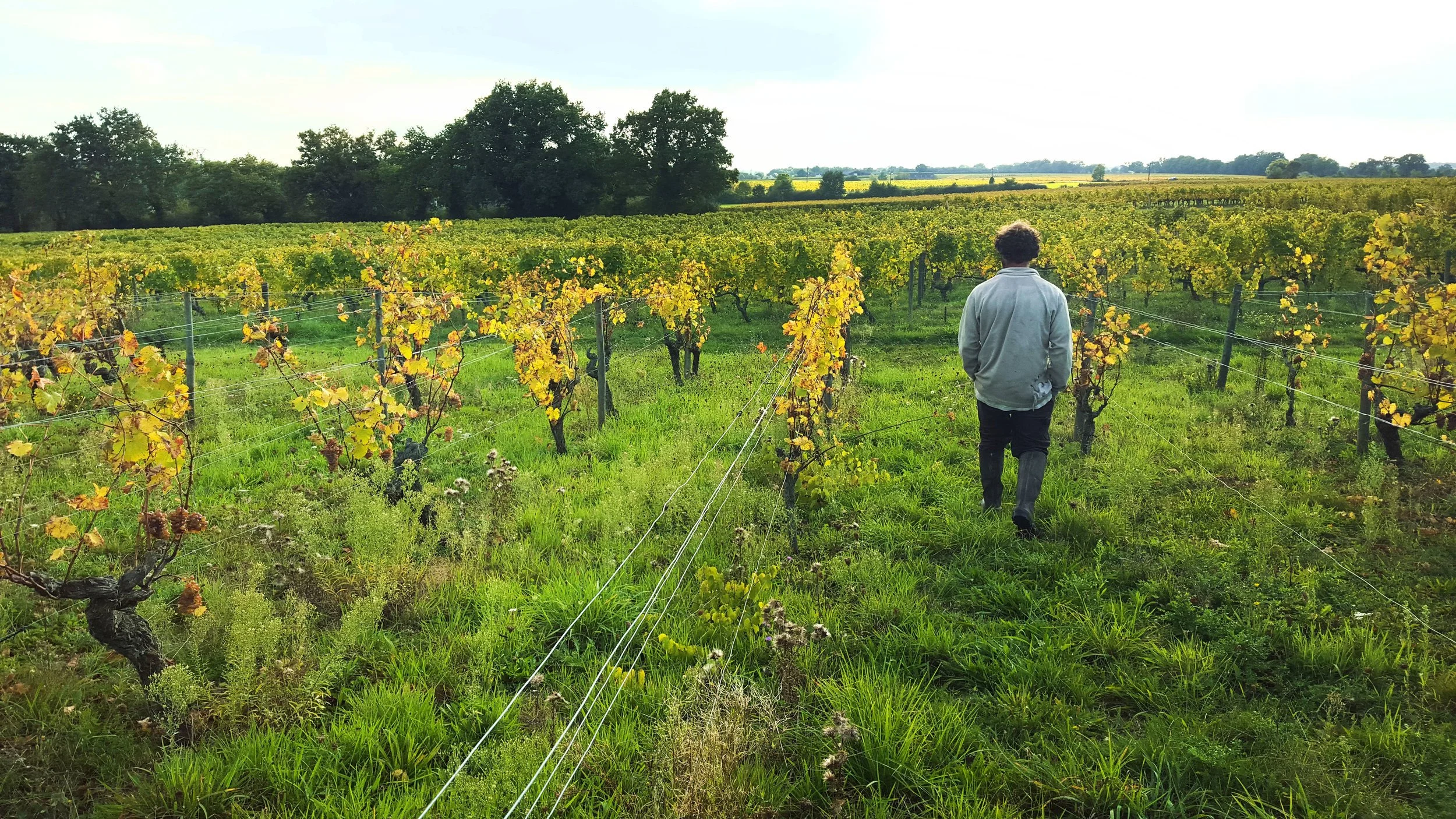Jerome Lambert
Rablay-sur-Layon, Anjou
Jerome Lambert farms a couple of hectares in and around Rablay-sur-Loire in Anjou. A true artisan and enthusiastic to the core, he is wildly passionate about natural farming and winemaking.
Born in Anjou, though not to a winemaking family, Jerome’s interest in wine has grown slowly and naturally as he has gradually acquired more and more parcels dotted around the area.
His farming is sensitive. He promotes bio-diversity though doesn't make a point of planting herbs or flowering plants amongst the vines, preferring to allow what is native to that part of Anjou grow freely. His vines are relatively old, on average 45 years, and the soils are classically Anjou. The whites are grown on lots of black and grey schist while the reds are planted on more sandy loam.
The winemaking is simple however the fruit selection is beyond rigorous. No oak is used in the winery, with the wines having incredible purity and primary detail as a result. Jerome is fussy throughout the whole process but particularly so during bottling, paying great attention to detail with non-oxidative handling during the critical post-fermentation stages.
Jerome produces compellingly varietal and terroir-expressive examples of chenin blanc, often producing numerous cuvees from the same parcels picked at different stages of ripeness, as well as excellent, protectively-handled red wines made from grolleau and cabernet franc. Since 2017, two sparkling cuvees are also made — De l’air (chenin blanc) and De l’air de rien (gamay and grolleau) — both of which are deeply serious and age-worthy.
All the wines are mineral, nourishing, very fresh and very high quality, with a substance that only comes from the most dedicated, ultra small scale farming.
Information on previous wines
-
Sparkling chenin blanc grown on schist and vinified in tank
2020 Fermented in bottle and disgorged before release. A great year. Classical, tense, dry and direct yet with a filling of delicate and restrained chenin fruit.
2018 Concentrated varietal acidity, a whisper of sweetness, intense regional minerality and perfect balance.
2017 An excellent vintage. Picked with the intention of making a wine with a whisper of residual sugar. Clear in the glass and classical in style.
-
Sparkling rosé from 40-50 year old gamay and grolleau grown on sand and clay, vinified in tank
2020 Elements of soil aromatically and on the palate, with great clarity of mixed fruit and earth characters from the two varieties. Restrained but abundant fruit; various shades of red fruit from the gamay, kissed nicely by the more vegetal aspects of grolleau. Nearly bone-dry.
2019 From a low-yielding year which produced high quality wines, particularly in the case of the reds. A richer fruit expression, similar to gamay d’auvergne, without being particularly weighty.
2018 The first vintage for this wine. Pure-fruited, with great depth and minerality.
-
Grolleau grown on sand and clay with elevage in fibreglass vats
2020 A great year. Protective handling has created a glossy structure but still with the essence of minerality through the skins. Sleek and supple yet structured, with earthen, perfectly ripe forest fruit and primary aromas.
2019 Light, bright and lifted, with varietal earth and pepper complemented nicely by the stalks.
2018 A warmer season and a slightly darker expression of fruit than previous years.
2017 An easy, sunny and excellent year, giving wines which are approachable at a younger age. Picked within a dark red fruit spectrum with good varietal earthen character.
2016 Challenging growing conditions with frost and overcast weather has given reduced yields and more earthen wines which have needed slightly longer resting time. Cool, dark fruit offset by minerality with sous bois character. Medium-bodied with a very fine but quite present tannic framework.
2015 Various shades of brambly fruit, with pronounced acidity.
2014 Light to medium bodied, with earthen varietal character.
-
2017 Gamay, from an easy, sunny and excellent year, giving wines which are approachable at a younger age. Red fruit with tension and snap.
2016 Grolleau and cabernet. Challenging growing conditions with frost and overcast weather has given reduced yields and more earthen wines which have needed slightly longer resting time. Cool, dark fruit offset by minerality with sous bois character. Medium-bodied with a very fine but quite present tannic framework.
2014 From a high quality and classical year. Light to medium bodied and energetic.
-
Chenin blanc grown on schist in Rablay-sur-Layon, vinified in cuve. In years when Jerome made three chenin cuvees based on stage of ripeness, this was the earliest-picked of the three
2019 A leaner vintage. Pure and primary, with orchard fruits and pronounced stony minerality.
2018 From a warmer year, producing concentrated wines with slightly lower acidity.
2017 From an easy, sunny and excellent year, giving wines which are approachable at a younger age.
2015 Primary and steely with lots of energy and drive.
-
Chenin blanc grown on schist. In years when Jerome made three chenin cuvees based on stage of ripeness, this was the second to be picked
2015 From an excellent vintage.
2014 Dry, with primary fruit, energy, nerve and very striking minerality.
2013 Refreshing, with minerality, energy and drive.
-
Chenin blanc grown on schist. In years when Jerome made three chenin cuvees based on stage of ripeness, this was the latest-picked of the three
2015 From an excellent vintage, with maturity, balance and abundant acidity. Concentrated minerality and precision.
-
2010 Botrytised chenin blanc made only in dry, warm years when healthy botrytis is able to flourish. Picked very late with residual sugars around 240 gm pl. Only about 150 litres made.

